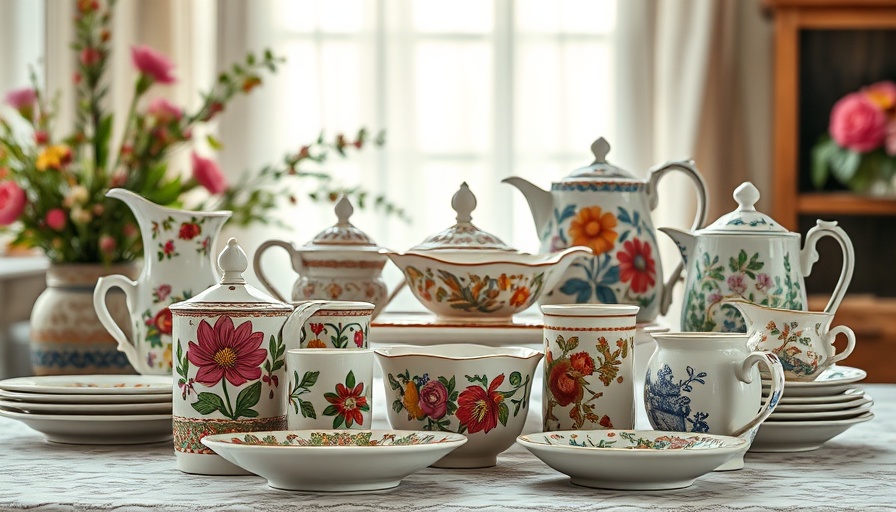
Explore the Timeless Charm of Vintage Brands
As modern aesthetics often lean towards minimalism, there's an undeniable allure in vintage brands that bring a unique character to homes. Designers are not just purchasing these items for their age; it is the story and quality behind each piece that captivates. Whether it's an ornate lamp that once graced a grand dining room or a playful ceramic platter, vintage items tell stories that new pieces simply cannot.
The Brands Designers Can't Resist
According to top designers, certain brands demand attention when thrifting or shopping for antiques. Here’s a closer look at the vintage names that, according to experts, should always be on your radar:
Baker Furniture: Craftsmanship that Lasts
With a historical reputation for quality craftsmanship, Baker Furniture is a designer favorite. Specializing in mid-century collections, their pieces are appreciated for their clean lines and sculptural forms. "Baker's unique finishes not only stand out but make a statement in traditional interiors," says Honey Collins. The legacy of fine woodworking translates into elegance that appeals to both minimalists and traditionalists alike.
Bordallo Pinheiro: The Quirk Factor
This brand is synonymous with personality, featuring playful designs often inspired by nature. Bordallo Pinheiro's cabbage and fruit-themed ceramics add a whimsical touch to decor. "Every house needs a touch of kitsch," notes designer Heather French, indicating the importance of infusing charm and fun into home environments. Their quirky creations not only serve functional purposes but also spark conversation.
Mottahedeh: Elevating Your Tablescape
Known for luxury ceramic reproductions, Mottahedeh’s pieces are favored by the elite, including the White House. Their intricate porcelain designs, like the Tobacco Leaf pattern, evoke elegance at any table setting. Collins emphasizes how collections from this brand can elevate the overall aesthetic of a dining experience, making every meal feel like a special occasion.
Russel Wright: Modern Heritage
Emerging from a background in industrial engineering, Russel Wright's ceramic dinnerware revolutionized the kitchenware market. His designs utilize soft glazes and organic shapes that encourage a relaxed dining atmosphere. The understated beauty of his pieces can perfectly complement modern and vintage settings alike, drawing attention without overshadowing the food, which is the focal point of any meal.
Why Vintage Brands Matter
The trend of purchasing vintage isn't just about style; it's also about sustainability and individuality. By opting for vintage, consumers are making environmentally conscious choices while embracing unique aesthetics. Each vintage piece carries a history, contributing to a more personalized home environment. This contrasts sharply with high-volume, low-quality mass-produced items commonly found today.
Future Trends in Vintage Shopping
As thrift culture continues to expand, particularly with younger generations, we can expect to see a rise in the appreciation of vintage brands. Online platforms are becoming a go-to resource for unique vintage pieces. Platforms like Etsy and specialized vintage marketplaces not only make acquiring these treasures easier but also foster communities around shared interests in design history. This growing trend offers opportunities for both buyers and sellers.
Connect with the Story Behind Each Piece
When hunting for vintage treasures, it's essential to connect with the story and craftsmanship behind each item. Ask questions about the origin, history, and purpose of pieces before purchasing. This connection adds value, both financially and emotionally. Furthermore, sharing these stories with friends can enhance gatherings and bring joy into home décor.
In Conclusion: Embrace the Vintage Movement
The resurgence of vintage shopping underscores a shift towards personalization, quality, and sustainability in home decorating. By incorporating these timeless brands into your space, you're not only curating a distinctive aesthetic but also participating in a larger story of design and history. Next time you find yourself at a flea market or browsing online, consider the unique charm of vintage brands that designers recommend.
 Add Row
Add Row  Add
Add 




Write A Comment